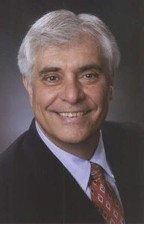At Procter & Gamble (P&G), Tom Muccio drove the creation of the multifunctional customer team concept and was the leader of its global relationship with Walmart for 15 years. His experiences were the impetus behind the P&G case study featured in AASA’s ‘Aftermarket Outlook 2020’ study and the Harvard Business Review. He will be a keynote speaker at the upcoming AASA VisCon 2012 (VisCon) on Thursday, March 29. His interactive discussion, “Turning Insights Into Action: How P&G and Wal-Mart Partnered for Success,” will address his experiences and applications for customer relationship strategies with major retailers for automotive aftermarket suppliers. In today’s Executive Interview, Muccio gives us a brief look at the successes and challenges he experienced in that role. 
As senior customer strategy officer for Procter & Gamble, you were credited with growing sales to Walmart from $350 million to $7.8 billion. What were some key strategies you employed to make this happen that you would consider universal, or applicable to any business?
Prior to the initiation of the efficient customer response (ECR) “team concept,” P&G’s relationship with Walmart was transactional, focused on and driven by internal processes and, frankly, a bit adversarial. Our relationship and all activities were focused on buying and selling functions only.
We set about changing the game to create a win-win relationship and to increase end-customer value. We did this through reducing day-to-day business complexity and increasing profits by driving costs out of the total system.
Our mission was to achieve the long-term business objectives of both companies by building a total system partnership – one which would allow our respective companies to better serve the end-customer. This mission has clear application to other industries, especially the automotive aftermarket with its complex network of channel partners. The goal is a partnership focused on the needs and buying habits of the end-customers – in the case of the automotive aftermarket, the repair professional.
What did you consider to be your greatest challenge during that experience and how did you overcome it?
Prior to adopting the customer team approach, we were in effect saying to our customers, “So, apart from the fact we are not price competitive, we’re inconsistent, inflexible, unresponsive and arrogant, are there any other barriers to our doing more business together?”
Our strategies – turning our adversarial relationship into a value-added partnership, focusing on the total system, creating a single interface, leveraging the power of our brands and building business by category – were essential to achieving our mission.
The biggest challenge is always gaining acceptance for change. It’s a common human condition – we prefer to stay with the problems we understand rather than looking for unfamiliar, and perhaps uncomfortable, solutions.
We were able to overcome this challenge through communication of the long-term goals – more volume, more profitability, more capacity, more precision, lower costs, better service and better people development, just to name a few. Success depended on a transparent, standard measurement methodology to drive change. There must be an agreed communication process for reporting both successes and road blocks. Our ECR scorecard provided this crucial data needed to fine-tune and improve processes.
You were also key in facilitating the P&G/Wal-Mart case study featured in AASA’s “Aftermarket Outlook 2020” report. What are some of the most intriguing findings of that case study, in your opinion?
One of the most intriguing findings was that P&G’s prices to our channel customers were actually lower than they had been five years prior to initiating the customer team concept. This accomplishment was especially impressive considering that the food store consumer price index (CPI) grew 3.1 percent per year during that same period.
We learned the importance of involving our channel partners early in the process. This was vital in the definition of the problems and the opportunities – and in keeping the focus on creating better value for the end-customer.
We also were aware that our ECR effort had to continue to improve. We continued to evolve the program, and participation increased. By continuing to monitor and improve the program, we were able to gain a better understanding of how and why different types of end-customers buy the way they do and how the channel affects buying behaviors.
What can VisCon attendees expect to hear/learn during your presentation later this month?
When approaching this type of change, it’s important to recognize that it is hard work. It requires complex, interdependent basic work process changes, and it will take time and perseverance. The implementation is never ending – business must continue to modify and refine it over time.
The most important take-away is to focus on the ultimate goal of creating better value for the end-customer. The results are worth the effort, as the P&G case study demonstrates. North American performance improved substantially. Profits and revenues were up significantly. P&G grew share in 25 of 28 categories, and overall share was up 1 percent in three years. Although the company still viewed product technology development and marketing prowess as its two main strengths, it was clear that we had built another key capability to drive success. And that is – it is possible to achieve shared vision, results orientation and a relationship of broad sharing and mutual trust with channel partners to reach more end-customers.
Muccio will talk more about this in his interactive discussion, “Turning Insights Into Action: How P&G and Wal-Mart Partnered for Success,” at AASA VisCon 2012 (VisCon) on Thursday, March 29. For more information about AASA VisCon 2012, visit www.aasavision.org.














